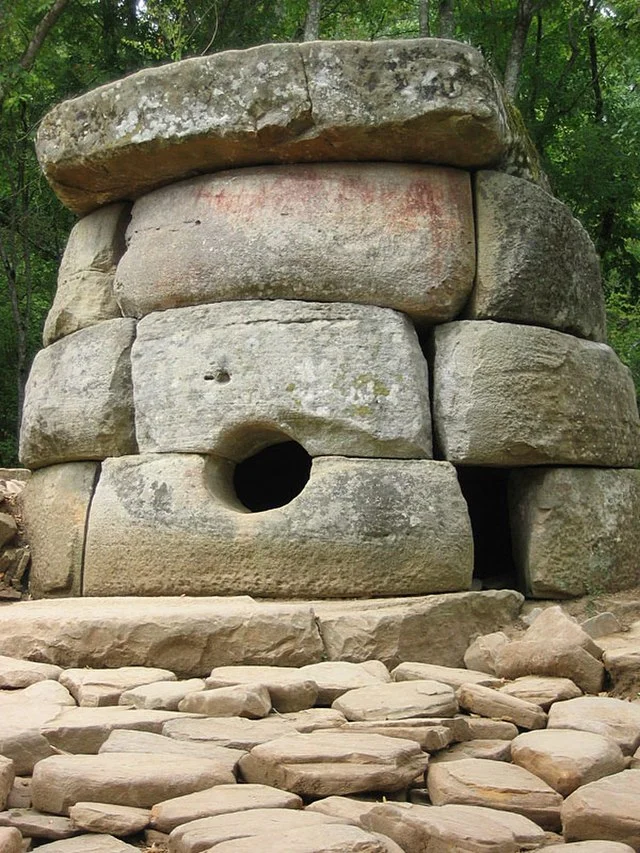Dolmens of the North Caucasus are megalithic tomb structures found primarily in the Western Caucasus region, including areas like Krasnodar Krai, Adygea, and the Republic of Abkhazia. These dolmens date from the late 3rd millennium BC to the early 2nd millennium BC. The exact purpose and construction methods of these ancient monuments continue to be studied.
Get your dose of History via Email
Historical Context
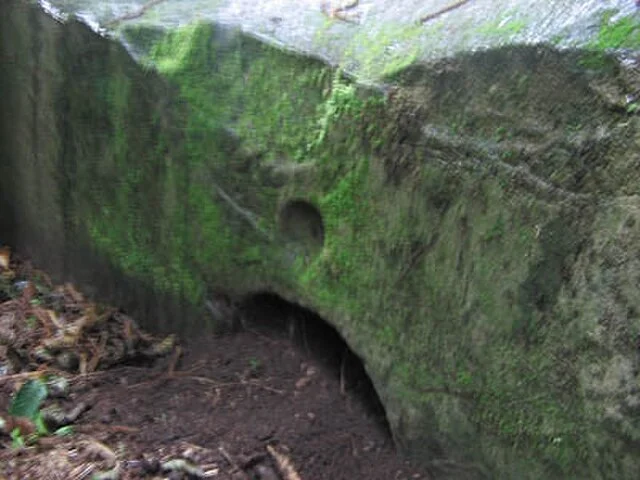
The North Caucasus dolmens are associated with the Bronze Age and were likely built by early farming communities. Researchers link their construction to the spread of sedentary agricultural practices in the region. These dolmens, typically found in clusters, are believed to have served as communal burial sites, though some may have had other ceremonial purposes.
The dolmens consist of large stone slabs arranged to create a chamber. Most dolmens in this area follow a rectangular or trapezoidal shape. The stones are fitted together without mortar, using careful precision. Some dolmens feature a circular entrance or “portal” in the front slab, which likely played a symbolic role.
Types of Dolmens
There are several types of dolmens found in the North Caucasus:
- Slab Dolmens: Constructed from large, flat stone slabs, these dolmens are among the most common. The stones are assembled to create a rectangular or trapezoidal structure.
- Monolithic Dolmens: Carved from a single large stone, these are less common and demonstrate advanced stone-cutting techniques.
- Composite Dolmens: Built using a combination of slab and monolithic techniques. These represent a transitional form of construction.
Construction Techniques
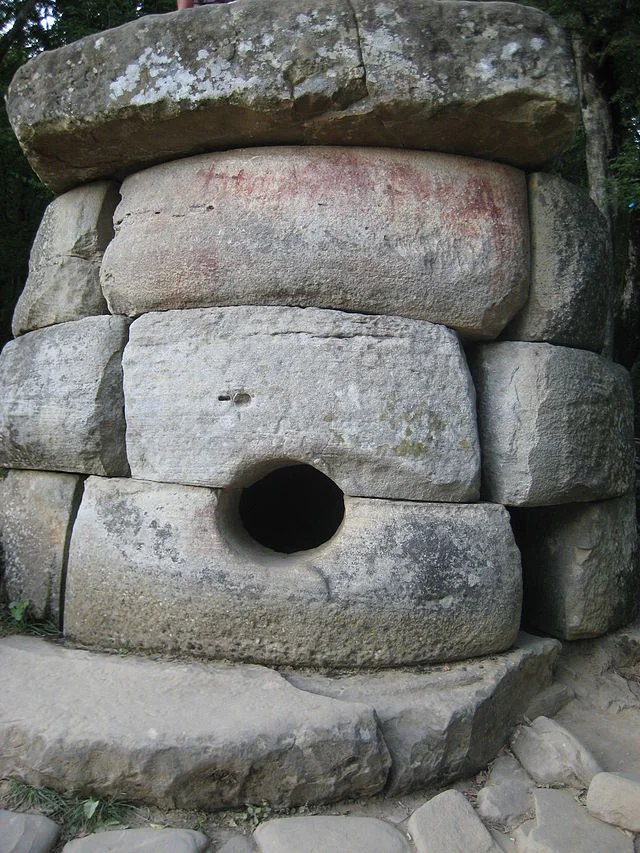
Dolmen construction required advanced skills in quarrying and stone shaping. The builders selected stone blocks from nearby quarries and transported them to the construction site, often over difficult terrain. The stone slabs were shaped and then precisely fitted together. Scholars believe that the use of simple tools, levers, and ramps enabled these early people to move and position the massive stones.
The portal holes found in many dolmens indicate a ritual or symbolic function, possibly relating to the afterlife. Some theories suggest the holes were used to insert offerings or communicate with the dead.
Cultural and Archaeological Significance
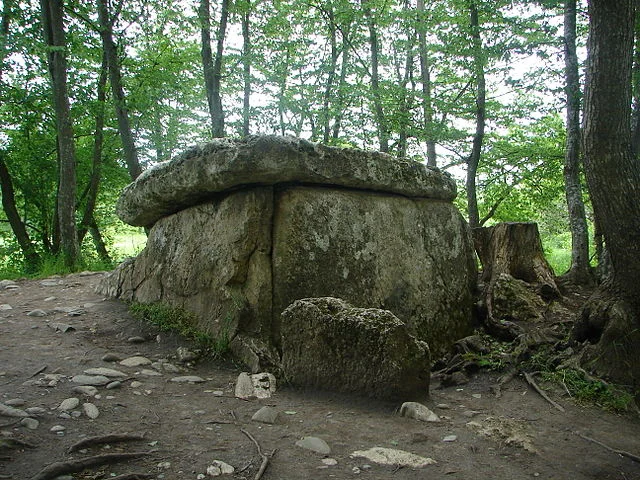
The North Caucasus dolmens offer insights into the region’s prehistoric communities. Their construction points to complex social organization and advanced architectural knowledge. Similar megalithic structures have been found in other regions, suggesting a possible cultural connection across Europe and the Near East.
While many dolmens have been damaged over time, archaeologists continue to study them through excavation and restoration. Modern investigations have revealed evidence of human remains, pottery, and other artifacts within the tombs, helping researchers better understand the burial practices of the era.
Preservation and Current Research
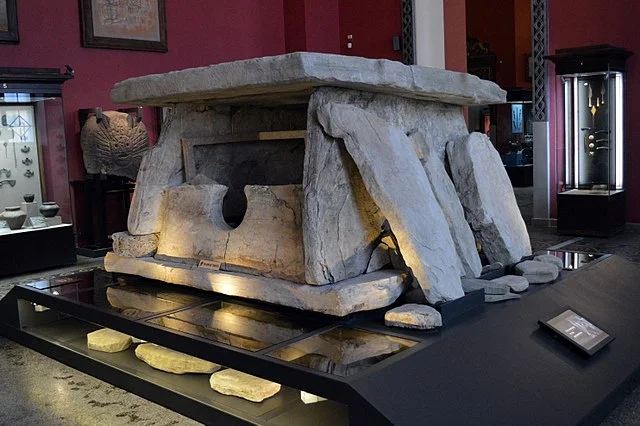
Dolmens in the North Caucasus have been subjected to natural erosion and human activity. However, several efforts are underway to preserve these sites. Archaeologists are using modern technologies like 3D modeling and ground-penetrating radar to study the structures without damaging them.
In recent years, interest in the dolmens has grown, with scholars aiming to better understand their purpose. Some researchers argue that the dolmens were not only burial sites but also served as markers of territory or spiritual sites linked to ancestor worship. Further research and excavation may provide answers to these questions.
Conclusion
The Dolmens of the North Caucasus are a testament to the ingenuity and cultural complexity of early societies in the region. Their construction, variety, and symbolism continue to fascinate archaeologists and historians. By studying these ancient monuments, we gain valuable insights into the region’s prehistoric cultures and their connection to the broader ancient world.
Source:
Wikipedia

